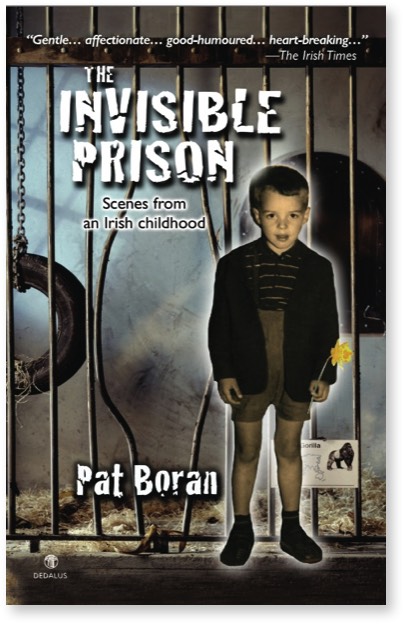Gentle... affectionate... good-humoured... heart-breaking...
The Irish Times

"He writes with a poet's sensibility... Each individual chapter feels like a short story in itself." —Peter Sheridan, Books of the Year, Liveline, RTÉ Radio 1
"Resolutely amusing and emotionally resonant, Boran’s memoir captures all the excitement and natural curiosity of childhood... " —Sunday Business Post
"[Its] beautiful, poetic script [reminds] us what the essence of childhood is all about" — Des Kenny, Books of the Year, Sunday Independent
Love All
In the Portlaoise of the 1970s, where I grew up, there were two tennis clubs. One was owned and run by the ESB, as their staff social club: it was just at the then outer limits of the town, and was open to the general public — the young lads of whom, like myself, gravitated to the pool tables in the club house, happy to watch their sisters and friends knock a handful of yellow tennis balls from the local tennis ball factory back and forth, desultorily, until the sun went down. The other tennis club, The Portlaoise ‘Lawn’ Tennis Club, was a very different affair.
The Portlaoise ‘Lawn’ Tennis Club was situated behind a small Protestant parish hall more or less in the centre of the town. The fact that it was right across from the wonderfully-named Dead Wall — the biggest wall I’d seen in my life until then —gave it a kind of central authority. But if the Dead Wall had been built to hold up and back the weight of the thirty-foot railway embankment that runs through the town, the small lawn tennis club across the road from it was proof that gentler, more fragile activities could occupy the hearts and minds of the populace of our midland town.
In truth, I don’t think I ever actually played what might be called a game of tennis, either in one of those two clubs back then, or since. My mother in her time had often done so, and later both of my sisters regularly went out with on summer evenings, tennis rackets in hand, to play at one of the tarmac courts that would later appear in the grounds of the Presentation Convent. Despite this, tennis remained for me a strange, if strangely fascinating, game.
It was true that, unlike any other game I could think of, or saw anywhere around me, tennis alone broke the gender divide, which was a divide worth breaking, as far as I was concerned, and couples could often be seen playing together, even in Portlaoise. And it was even true that the championships at Wimbledon, and maybe even at other tournaments, had a category called Mixed Doubles, which was exactly that — as if, despite its apparent tameness and a dress code that gave it an olde worlde feel, tennis was at the same time somehow, discretely, revolutionary.
Yet the truth was that, in my age group at least, tennis was a girls’ game, a game that us boys could watch, or pretend not to watch, but about which we were, as in so many other respects, in the dark. Surely there was more than meets the eye to a game in which the word ‘love’, not to mention the word ‘match’, was used over and over.
But boys simply did not play tennis. By which I suppose I mean Catholic boys. Where gaelic footballers, soccer or rugby players of my acquaintance seemed intent on mucking up their kit as quickly as possible after the initial throw-in or kick-off, tennis players at the end of a match would come off the court in the same virginal whites as they’d gone out. It seemed to go against what games were all about, a kind of rough and tumble, a kind of letting go and giving in and going wild.
It took just a small incident one summer’s night, in the late 1970s, to change my mind about tennis, and to see it less as some affected pastime of the gods, stopping to sip their ambrosia, and more as just another, if more stylised, version of a great cosmic game.
Having spent the afternoon after school at a friend’s house (where the main activities had been drinking Coca Cola and pillow-fighting in his elder brother’s bedroom), this particular summer’s evening I took a short cut back home up Railway Street, which meant I had to pass along by the side of the Dead Wall (looming up over me like a cliff face), and of course by the Portlaoise Lawn Tennis Club. And as it happened, whatever evening of the week it was, a Friday perhaps, a tennis club social was in full swing: some local tournament had concluded earlier in the day, and now disco music and the glow of flashing, coloured lights was spilling out of the high windows of the small building.
It was then I noticed that the parked car beside which I was idly standing, half listening, half thinking of nothing at all, was moving from side to side and up and down. And, just as others in my class had claimed, though I hadn’t believed them, when I stepped back, startled, and glanced over again, through the steamed-up windscreen I could just about make out two shapes, two figures, one female, one male, and both dressed in white, their arms wrapped tight around each other, for all the world like two angels struggling to be human again.